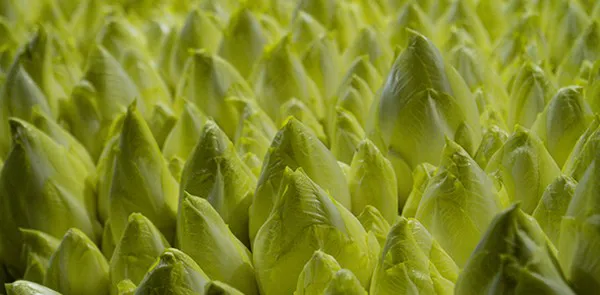On the Belgian chicory market, the new chicory root harvest is slightly delayed. Late sowing means it will still be a while, putting the market under quite some stress, "Everyone must be cautious with their stock to ensure enough supply," Charles Cattoir of Primalof begins.
"Far less product was marketed this summer. The chicory market is usually a little quieter, so supply and demand were balanced; supply may even have been a little higher than demand. That resulted in a bit less production in the second half of July and early August. However, a couple of unexpected rainstorms caused a significant shortage. It's a matter of not reacting too quickly to the increased demand because the new roots haven't arrived yet."

That is because Belgian growers sowed four to six weeks later than last year. "Also, ten to 20% less was sown to give the roots enough time to reach sufficient size. If growers had chosen a normal seeding density, it would've made for small roots. They have up to six weeks less growing time that you can't make up. You could wait a few weeks longer to harvest, but growth-wise, a November day isn't the same as a June day. It doesn't mean fewer roots are coming off the field. If they all reach nice sizes, the harvest will be similar to last year," says Charles.
Adequate supply requires common sense
He says the first large quantities of roots should be available from mid-November. "The recent rain did them well, but we probably won't be able to harvest until about October 25, after which the roots must rest for at least another two to three weeks."

"Until then, common sense is required. Those who still have stock and want to sell can get 20 to 30% more than last year. But supply will be minimal. The new roots won't make up for that shortage either. That's why most companies must be quiet this summer to get through the winter later. I expect a balanced winter supply and demand; there will be enough, but certainly not too much. That will result in a more expensive than normal market. However, prices will still be enough to keep costs down," Charles explains.
Challenges
That remains one of the many challenges the chicory sector faces. "We're already looking at the 2024 season, where there will be plenty of competition, initially from leasehold land crops. However, European legislation is making that particularly tricky. Erosion is a major issue in chicory cultivation. New legislation makes ridge growing less accessible in erosion-prone plots. The potential acreage of leasehold land will thus shrink."

"Also, water availability and sharply increased cost prices always remain very challenging. The energy crisis seems to be largely over, but your power still costs two to three times more. Also, production will cost extra next year, and cultivation expenses keep rising. So, a price increase is coming. It's unavoidable."
Limited summer supply
Finally, crop protection products remain a hot topic. "Vital crop protection products for growing chicory will soon be banned, one even from next season. It's going to be tough if there are no alternatives. And we're a niche market, so there aren't many opportunities for new substances that benefit both nature and cultivation. Many growers then begin doing things by hand to get everything right. That quickly costs €2000 to €2500 more per hectare. That could be the final blow for many," Cattoir says.
"There are plenty of challenges, which increases our product's uncertainty. There's often not a right earning model, given all the issues. Some growers, thus, choose more secure crops or cultivate other things alongside chicory. That could mean having sufficient, correctly-priced supply in the classic chicory months but less availability in the summer."
Primalof is participating in the Agriculture Day. "It will showcase some farms and is a great way to show people what's involved in growing a wonderful product like chicory. It's important to explain the story of chicory, and it's a good way to bring people closer to the product," Charles concludes.
For more information: Charles Cattoir
Charles Cattoir
Primalof
23 Leeg Bracht
9860, Balegem, BE
Tel: +32 (0) 483 484 717
Email: charles@primalof.be
Website: www.primalof.be
